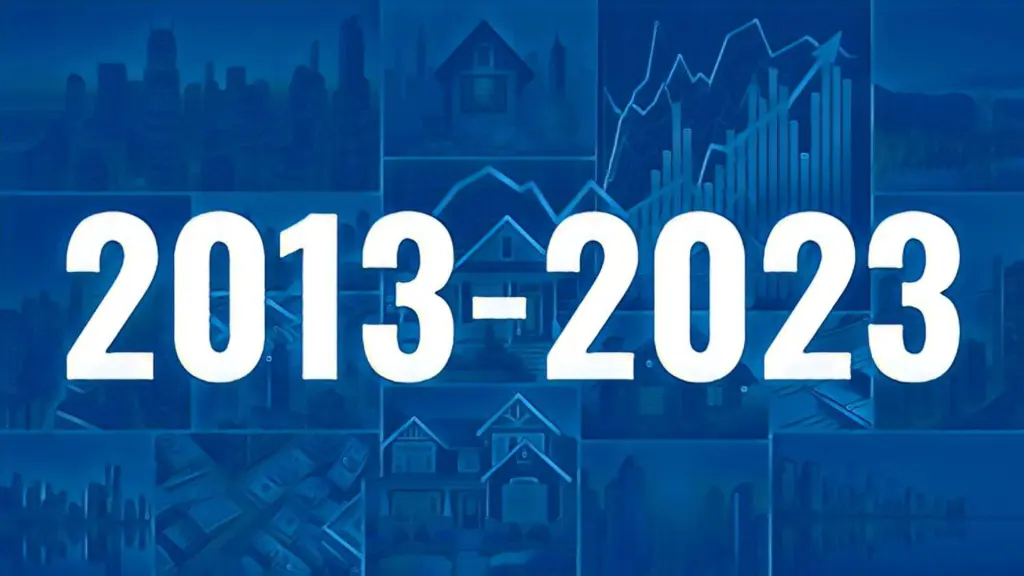The 10 most affordable housing markets in the world—9 are in the U.S. – CNBC

Global Housing Affordability Report: A Challenge to Sustainable Development Goals
A May 2025 study by the Chapman University Center for Demographics and Policy reveals a critical global housing affordability crisis, with significant implications for the achievement of the United Nations Sustainable Development Goals (SDGs). The analysis of 95 major international housing markets found none to be affordable, directly challenging the objectives of SDG 11 (Sustainable Cities and Communities) and exacerbating issues related to SDG 1 (No Poverty) and SDG 10 (Reduced Inequalities).
Key Findings on Global Housing Affordability
Universal Lack of Affordable Markets
The study, which compared median home prices to median incomes in the third quarter of 2024, established a benchmark for affordability where a median home price is no more than three times the median annual income. The findings indicate a systemic failure to meet this standard globally.
- Of the 95 markets analyzed, not a single one was classified as “affordable.”
- Twelve markets were deemed “impossibly unaffordable,” highlighting extreme stress on household finances.
- The most accessible market, Pittsburgh, Pennsylvania, was still rated “moderately unaffordable” with a price-to-income ratio of 3.2.
Most Accessible Major Housing Markets
While no market met the affordability criteria, the following were identified as the least unaffordable, indicating slightly less severe, though still significant, barriers to homeownership.
- Pittsburgh, USA: 3.2
- Cleveland, USA: 3.3
- St. Louis, USA: 3.5
- Rochester, New York, USA: 3.6
- Edmonton, Canada: 3.7 (tie)
- Middlesbrough and Durham, England: 3.7 (tie)
- Oklahoma City, USA: 3.7 (tie)
- Omaha, Nebraska, USA: 3.7 (tie)
- Sheffield, England: 3.8
- Cincinnati, USA: 3.9 (tie)
- Detroit, USA: 3.9 (tie)
Implications for Sustainable Development Goals (SDGs)
SDG 11: Sustainable Cities and Communities
The report’s findings represent a direct contradiction to SDG Target 11.1, which aims to ensure access for all to adequate, safe, and affordable housing. The widespread unaffordability crisis undermines the creation of inclusive and sustainable urban environments.
- Failure to provide affordable housing can lead to the growth of informal settlements and inadequate living conditions.
- It forces lower and middle-income populations to the urban periphery, increasing commute times, congestion, and carbon emissions.
- Social and economic segregation within cities is intensified, hindering community cohesion.
SDG 10: Reduced Inequalities
The housing crisis disproportionately affects lower-income households, widening the gap between the wealthy and the poor. Data from the United States illustrates this disparity, showing a market that increasingly serves only high-income earners.
- In the U.S., households earning $75,000 annually could afford only 21.2% of available homes as of May 2025, whereas they should have access to 48.1% based on their population share.
- Conversely, households earning $250,000 or more could afford at least 80% of home listings.
- This inequality in housing access prevents wealth accumulation for a significant portion of the population, as homeownership is a primary driver of intergenerational wealth.
SDG 1 (No Poverty) and SDG 8 (Decent Work and Economic Growth)
Exorbitant housing costs are a major barrier to poverty reduction and sustainable economic growth. When a large percentage of income is allocated to housing, it limits spending on other essential goods and services, such as healthcare, education, and nutrition.
- High housing costs push households closer to the poverty line and make them more vulnerable to economic shocks.
- Unaffordable housing in major economic centers restricts labor mobility, preventing workers from moving to areas with greater job opportunities.
- The U.S. median home price reached a record high of $435,300 in June 2025, marking 24 consecutive months of year-over-year price increases and further straining household budgets.
Conclusion: A Systemic Barrier to Sustainable Development
The global housing affordability crisis, as detailed in the Chapman University report and supported by data from the National Association of Realtors, is more than an economic issue; it is a fundamental obstacle to achieving a sustainable and equitable future. The inability of markets to provide affordable housing for their citizens directly undermines progress on SDGs 1, 8, 10, and 11, necessitating urgent policy intervention to create more inclusive, equitable, and sustainable communities worldwide.
1. Which SDGs are addressed or connected to the issues highlighted in the article?
SDG 11: Sustainable Cities and Communities
- The article’s primary focus is on the lack of affordable housing in 95 major urban housing markets worldwide. This directly relates to SDG 11, which aims to make cities and human settlements inclusive, safe, resilient, and sustainable. The core issue discussed—housing unaffordability—is a central component of sustainable urban development.
SDG 1: No Poverty
- The high cost of housing relative to income, as detailed in the article, is a significant financial burden on households. This can prevent people from escaping poverty or push them into it, as a large portion of their income is spent on shelter, leaving little for other basic needs like food, healthcare, and education.
SDG 10: Reduced Inequalities
- The article explicitly points out the disparity in housing access based on income. It states that U.S. households earning $250,000 or more could afford at least 80% of home listings, while those earning $75,000 could only afford 21.2%. This highlights a significant economic inequality in the housing market, which is a key concern of SDG 10.
2. What specific targets under those SDGs can be identified based on the article’s content?
Target 11.1: Ensure access for all to adequate, safe and affordable housing and basic services.
- This target is the most directly relevant. The article’s central finding from the Chapman University study is that none of the 95 major housing markets analyzed were “affordable.” The entire piece is an examination of the failure to meet this target, using the house price-to-income ratio as a measure of affordability.
Target 1.4: Ensure that all men and women, in particular the poor and the vulnerable, have equal rights to economic resources, as well as access to basic services, ownership and control over land and other forms of property.
- The article discusses the inability of many people, especially “first-time home buyers,” to purchase a home. Home ownership is a critical form of property and a key economic resource. The record-high median home prices mentioned create a barrier to achieving this target for a large segment of the population.
Target 10.2: Empower and promote the social and economic inclusion of all, irrespective of… economic or other status.
- The housing market described in the article is economically exclusive. The data showing that middle-income earners can afford less than a quarter of available homes demonstrates a system that disproportionately benefits high-income earners. This lack of access to affordable housing is a major barrier to the economic inclusion of middle and lower-income groups.
3. Are there any indicators mentioned or implied in the article that can be used to measure progress towards the identified targets?
House Price-to-Income Ratio
- This is the primary indicator used in the Chapman University study cited throughout the article. It is a direct measure of housing affordability. The study defines “affordable” as a ratio of 3.0 or less, and the article lists the specific ratios for the “most affordable” cities, such as Pittsburgh (3.2) and Cleveland (3.3), demonstrating how this indicator is used to classify markets.
Proportion of Housing Stock Affordable to Different Income Brackets
- The article implies this indicator by providing specific data from the National Association of Realtors. It states that households earning $75,000 a year can only afford 21.2% of active listings, while those earning $250,000 or more can afford at least 80%. This metric directly measures the accessibility of the housing market for different economic groups.
Median Home Price
- The article mentions that the median price for an existing home in the U.S. reached a record high of $435,300. While not a ratio, the absolute median price is a key data point used to track the housing market’s cost over time and is a fundamental component in calculating affordability.
4. SDGs, Targets and Indicators Table
| SDGs | Targets | Indicators |
|---|---|---|
| SDG 11: Sustainable Cities and Communities | 11.1: By 2030, ensure access for all to adequate, safe and affordable housing and basic services. | House price-to-income ratio (The article states no market had a ratio below 3.0, with Pittsburgh being the most affordable at 3.2). |
| SDG 10: Reduced Inequalities | 10.2: By 2030, empower and promote the social, economic and political inclusion of all, irrespective of… economic or other status. | Proportion of housing stock affordable to different income brackets (e.g., households earning $75,000 can afford 21.2% of listings, while those earning $250,000+ can afford over 80%). |
| SDG 1: No Poverty | 1.4: By 2030, ensure that all men and women, in particular the poor and the vulnerable, have equal rights to economic resources, as well as access to… ownership and control over… property. | Median home price as a barrier to property ownership (The article cites a record high median price of $435,300 in the U.S., making ownership inaccessible for many). |
Source: cnbc.com

What is Your Reaction?
 Like
0
Like
0
 Dislike
0
Dislike
0
 Love
0
Love
0
 Funny
0
Funny
0
 Angry
0
Angry
0
 Sad
0
Sad
0
 Wow
0
Wow
0

















































:focal(1500,1000)/https://media.globalcitizen.org/a6/9a/a69a4720-d8a1-4715-b596-18738d03c05c/rotary_polio_hero_image.jpg?#)






/countries/sri-lanka/photo-credit---dmc-sri-lanka.tmb-1200v.jpg?sfvrsn=dc298bcc_1#)
















